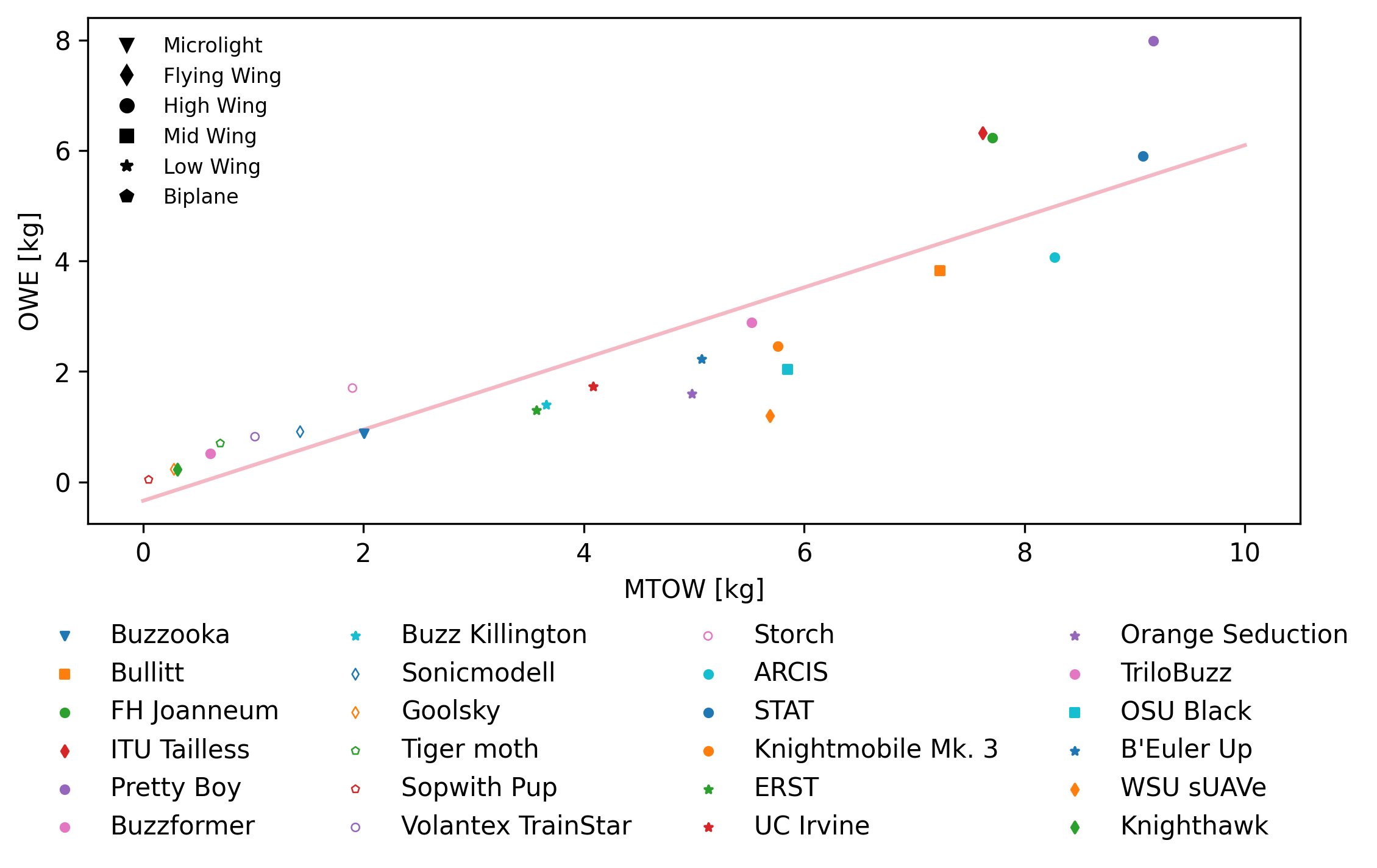Historic Weight Estimate
Figure 1 shows the OWE/MTOW data for a range of existing aircraft. The aircraft configuration is identified by the shape of the data point, with commercial aircraft identified by a hollow marker. The aim of this plot was to estimate the typical structural efficiency of unmanned aircraft on this scale, and therefore set a target OWE for the conceptual design. The linear trend shown gives a structural efficiency for existing aircraft of 35.6%. This efficiency is increased by the inclusion of commercially available aircraft, as the custom built aircraft alone have a structural efficiency trend of just 24.8%. Such a trend for the existing aircraft however tells very little about what can be expected. In comparison to commercial airliners for example, there is a huge amount of similarities between aircraft such as the manufacturing methods, materials and structure design. In contrast, when considering a range of custom built aircraft with a number of different mission requirements, there will be huge differences in the previously mentioned areas, explaining the low correlation and huge differences in efficiency. The highest performing existing aircraft for example, WSU sUAVe, has a structural efficiency of nearly 80%, much greater than the trend would suggest.
